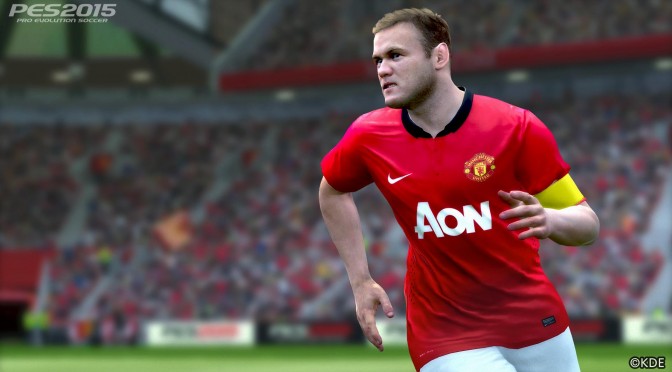Pro Evolution Soccer 2015 has just been released on the PC and given the fact that we’ve already shared our first impressions of EA Sports’ soccer title, we thought we should do the same for Konami’s game.
The PC version of Pro Evolution Soccer 2015 comes with all the features found on the current-gen console version, but with visuals that are basically comparable to those of old-gen consoles. Thanks to higher resolutions, however, these visuals are not THAT bad. They surely cannot keep up with FIFA 15, but then again we always value gameplay over graphics.
Unfortunately, Pro Evolution Soccer 2015 has not managed to top its biggest rival. While the game is better than its 2014 version, it’s still far away from being a worthy alternative to EA Sports’ soccer game.
What we loved about PES 2015 was its slower-paced nature. Contrary to FIFA 15, in PES 2015 the players feel heavier, and that’s a good thing. However, Konami’s title is plagued by other issues such as ‘latency-button’ problems. Contrary to FIFA 15, in PES 2015 you have to think and act 1-2 seconds prior to what is about to happen. If you don’t, your opponents will catch up and still the ball, even if you’ve already pressed a button for a pass or shoot. In many cases, this feels like ‘lagging’ and will undoubtedly introduce issues to players’ responsiveness. And do not misunderstand; we’re not judging the fact that players feel heavier but rather the fact that it takes 2 seconds for the issued command (whatever that is) to take effect.
And then there are all the problems that haunt this series from its PS2 days. Once again, you won’t have complete control over your players (instead of running towards the issued direction, players follow the direction of the ball). Once again, you’ll have to super cancel in order to break free from the game’s ‘automatic follow-direction-of-the-ball’ or when you want to place your player in a specific place whenever there is a long ball. Once again, you will notice players stopping for no apparent reasons (even though you keep pressing the analogue stick towards the right direction). And so on and so forth.
Let’s take for example the following match (Top Player difficulty, Semi-Assisted player switching, medium pass assist). At 1:21 we see Valencia crossing and it’s obvious that the ball is heading towards Young. The computer (semi-assisted control scheme) instead of giving us the correct player decides to switch to Van Persie. As a result, we had to manually switch the player. Of course, in most other crosses the game was giving us the appropriate players, so one has to wonder why this happened in the first place.
At 3:24, Young is right in front of Zabaleta and does not make an effort to steal the ball (despite the fact we were pressing the appropriate button. You can see him attempting to steal afterwards, thus showing the ‘latency’ issues we’ve described above). At 5:00 there is a really ‘weird’ pass mistake that puzzled us as we did not issue to pass the ball towards that direction (so no, that’s not the result of an assisted pass. Keep in mind that this could result in a goal, so imagine your frustration if that was to happen). At 5:37 Evans is going backwards for no apparent reason. And… we believe you get the picture.
All in all, Pro Evolution Soccer 2015 is better than its predecessor, however it is still plagued by issues that have been haunting this series for quite some time. The fact that these same issues appear even when Konami decided to switch engines means that the Japanese company needs to dive deep into the game’s code in order to solve them (instead of trying to polish and ‘camouflage’ broken system).
Enjoy!

John is the founder and Editor in Chief at DSOGaming. He is a PC gaming fan and highly supports the modding and indie communities. Before creating DSOGaming, John worked on numerous gaming websites. While he is a die-hard PC gamer, his gaming roots can be found on consoles. John loved – and still does – the 16-bit consoles, and considers SNES to be one of the best consoles. Still, the PC platform won him over consoles. That was mainly due to 3DFX and its iconic dedicated 3D accelerator graphics card, Voodoo 2. John has also written a higher degree thesis on the “The Evolution of PC graphics cards.”
Contact: Email

